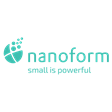Drug particle engineering is set to revolutionise medicine and provide solutions to the world’s biggest healthcare challenges. Scientific innovator Nanoform is a vital part of that movement. Here’s why
Not only is population ageing one of the most significant social transformations of the 21st century, it is among the greatest challenges facing humanity say agencies including the World Health Organization, the European Medicines Agency and the Centers for Disease Control and Prevention.
Improved quality of living with a continually growing net population is creating an enormous shift in global demographics, with many countries facing a dramatic increase in their percentage of elderly citizens. In fact, the United Nations has predicted a 56% increase in the 60 years-plus age bracket between 2015 and 2030. While extended lifespans offer a wealth of opportunities for the individual and society, they place an unprecedented demand on global healthcare systems. As age-related diseases rise in accordance with our ageing population, novel and more efficient therapies are required to treat them. Pharma innovation is critical to delivering these new treatments and the latest advances in nanotechnology and AI offer particularly promising prospects to this great unmet medical need.
Challenges when treating ageing populations
Implementing pharmacokinetic and pharmacodynamic analysis is essential when creating new pharma products, with developing new medicines for the elderly no exception. An important problem that must be overcome is the increased risk of adverse drug reactions (ADR). Twice as many patients aged 65-plus are hospitalised due to ADR-related conditions compared to younger people because the combination of medications required to treat multiple age-related disorders increases the likelihood of compounded effects.1 Moreover, as the body ages, its reduced water retention and greater fat distribution concentrates drugs. Old organs metabolise drugs slower, increasing the time it takes for the body to excrete medications. This is particularly problematic for sedative drugs used to treat elderly patients because the risk of falls or accidents is higher.
AI application isn’t limited to big data. Using Bayesian probability enables companies to work with limited datasets too

Elderly populations also exhibit lower medication compliance due to factors including complex medicine regimes.Another substantial part of the problem is the effect of xerostomy – difficulty swallowing due to reduced or absent saliva flow. Elderly patients are more susceptible, with xerostomia affecting around 30% of people aged 65 and older.2 Retaining the convenience of oral drug delivery must be considered when developing new treatments for older patients.
Developing the medicines of tomorrow
As with all challenges, there’s scope for new opportunities and the pharma industry must be ready with innovative solutions to advance these. Fortunately, significant advances in nanotechnology and AI are paving the way for new treatments. Nanoform’s latest nanoparticle engineering technologies are tackling the issues of ADRs and xerostomy in the elderly. By using a unique recrystallisation method that controls the solubility of an active pharma ingredient (API) in supercritical carbon dioxide (scCO2), we are able to decrease the produced particle’s median size down to 200nm or less. With the required dosage of a drug reduced by more than 10-fold relative to micronized material, the amount of API required to achieve a therapeutic effect is significantly reduced, which also lowers the risk of ADR. In addition, the smaller quantity of the drug substance can decrease the overall size of the tablet, which can significantly help elderly patients suffering from xerostomia continue with their drug regime.
AI is also expected to critically impact the pharma industry and enhance our understanding of the underlying complexity of age-related diseases. The frequency of literature published yearly can make it difficult for researchers to stay up to date. AI’s proven ability to extract key information can prevent the loss of important insight, which will lead to advances in drug development. AI application is not limited to big data in the pharma industry. Using Bayesian probability can enable companies to work with limited datasets too. And, when combined with nanotechnology, sparse data AI can supplement pharma development by swiftly determining the drug compounds best fitted to treat age-related disease.
Nanoparticle engineering is a promising avenue for targeting pulmonary illnesses
Fighting chronic lung disease
As innovative pharma technologies continue to be developed,the next challenge will be to apply these to the formation of novel treatments for noncommunicable age-related diseases, including lung disease. Chronic obstructive pulmonary disease (COPD) is an example of an age-related disease that causes difficulty in breathing. The prevalence of COPD increases markedly with age and it is expected to become the third leading cause of death by 2030, according to the World Health Organization. Currently incurable, COPD treatment centres on long-term maintenance treatments through bronchodilators and inhaled corticosteroids. Developing more effective treatments has been limited by the large size of the inhaled drug particles that fail to reach the deep lung. However, greater local drug concentrations can be obtained by developing drug particles small enough to travel further than the upper respiratory tract and deep into the lung.
The pharma industry is now well positioned to offer effective therapeutic options for Alzheimer’s

Successful drug delivery to the deep lung is also dependent on the competition between solubility and the mucociliary clearance, with a faster rate of dissolution required for a therapeutic effect to be achieved.3 Nanoparticle engineering is a promising avenue for targeting pulmonary illnesses. In fact, among the latest innovations in this field is the development of nanoparticles under 100nm with enhanced solubility which, when combined with a carrier system, can achieve the necessary aerodynamic diameters for therapeutic delivery to the deep lung.
Finding a cure for Alzheimer’s
The deep lung is not the only exciting target for drug delivery innovations. Age-related diseases of the brain, including Alzheimer’s disease, represent one of the greatest challenges to the medical and healthcare sectors. Alzheimer’s prevalence is expected to increase with ageing populations and it is already the most common cause of dementia in the 60-years and over age bracket. A 2017 epidemiological study predicted an annual growth rate of 2.98% between 2016 and 2026, which will have serious consequences for healthcare systems around the world.
The blood–brain barrier (BBB) presents a significant obstacle to developing Alzheimer’s treatments, as well as other disorders associated with the central nervous system (CNS). This barrier, which protects the CNS from invading pathogens and neurotoxic molecules, routinely excludes therapeutics. Nonetheless, studies have discovered an inverse correlation between nanoparticle size and BBB penetrations, indicating that advanced nanonization technologies may lead to effective drug delivery across the BBB.4 With the recent development of technologies capable of producing stable nanoparticles under 50nm, the pharma industry is now well positioned to offer effective therapeutic options for Alzheimer’s.
With society facing immense challenges as the global population ages, the pharma industry must adapt to develop and deliver new treatments. Here is an opportunity to increase the quality of life for millions of elderly patients around the world and the latest innovations in nanotechnology and AI are already contributing to exciting new drug development projects to treat age-related diseases. By championing innovation, we can be ready with the life-changing solutions that will enable people to lead full and healthy lives for longer.
Niklas Sandler is the chief technology officer at Nanoform
References
1. A H Lavan and P Gallagher, Ther. Adv. Drug. Saf, 2016, 7, 11 (DOI: 10.1177/2042098615615472)
2. J A Ship et al, J. Am. Geriatr. Soc., 2002, 50, 535 (DOI: 10.1046/j.1532-5415.2002.50123.x)
3. M M Bailey and C J Berkland, Med. Res. Rev., 2008,29, 196 (DOI: 10.1002/med.20140)
4. C Saraiva et al, J. Control. Release, 2016,235, 34 (DOI: 10.1016/j.jconrel.2016.05.044)


















No comments yet